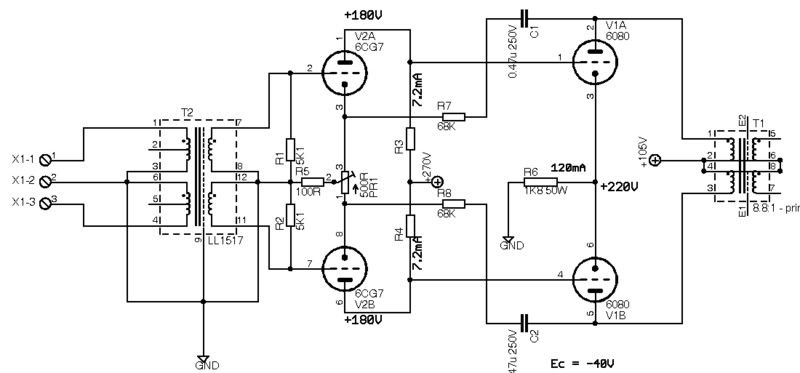Val_r
Well-known member
Hi,
Here is a headphone amplifier using the 6080's tubes.
Before X1 connector there is a balanced stepped attenuator.
Driver stage mounts the 6CG7, each rail has a voltage gain of 11 times (20.9dB).
With 12dBu at the input (8.73Vpp) we have about 80Vpp at the 6080's grids.
6080 working point is at Eb=105V, Ec=-40V, Ia=60mA, and the voltage swing at the anode of each 6080 is about 97V peak to peak, or 34Vrms.
At the secondary of T1, which has a ratio of 8.8:1, 2K5 prim. and 32 ohms sec., we have 3.89 Vrms developping on the 32-ohm load, thus a power of 472mW, I believe enough to drive low impedance headphones.
Any comment/suggestion highly appreciated.

Here is a headphone amplifier using the 6080's tubes.
Before X1 connector there is a balanced stepped attenuator.
Driver stage mounts the 6CG7, each rail has a voltage gain of 11 times (20.9dB).
With 12dBu at the input (8.73Vpp) we have about 80Vpp at the 6080's grids.
6080 working point is at Eb=105V, Ec=-40V, Ia=60mA, and the voltage swing at the anode of each 6080 is about 97V peak to peak, or 34Vrms.
At the secondary of T1, which has a ratio of 8.8:1, 2K5 prim. and 32 ohms sec., we have 3.89 Vrms developping on the 32-ohm load, thus a power of 472mW, I believe enough to drive low impedance headphones.
Any comment/suggestion highly appreciated.




